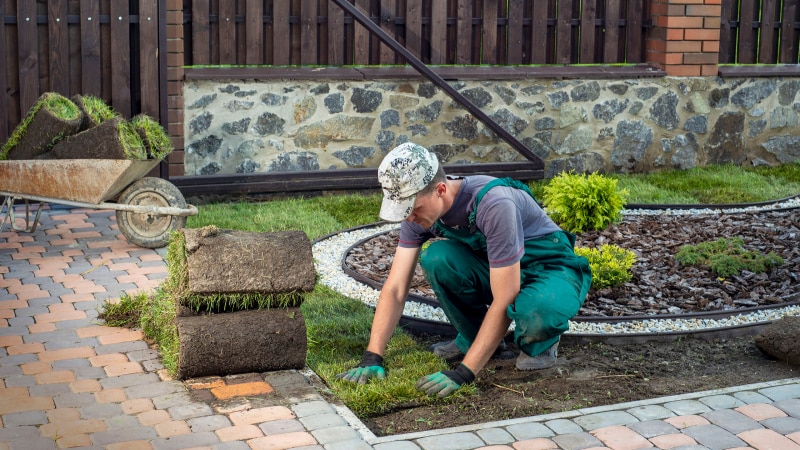Buying a house in a flood zone: 5 things to know

You’ve finally found your dream home, but it's located in a Special Flood Hazard Area (SFHA). An SFHA is a location that the government has deemed to be more vulnerable to severe flooding. Residents in these zones have certain requirements that must be met to safely maintain a residence in an SFHA. Before moving forward with your purchase, it’s fair to investigate what this might mean for you. Let’s take a look at five things to know before buying a house in an SFHA.
What is a flood zone?
Any home could technically be in a flood zone—anywhere it rains is at risk for flooding. But a special flood hazard area (SFHA) is a geographical area defined by its level of vulnerability to flood risk, as determined by the Federal Emergency Management Agency (FEMA).
Flood zones, or SFHAs, are categorized in order of low-to-moderate risk, high-risk and undefined risk. The identification of zones within the SFHA is done based on the starting letter of their names, which can be a prefix of either A or V, such as VE, A, AE, and VO. If your home isn’t located in an SFHA, the flood zone will start with B, C, D, X or none.
Is my house in a flood zone (SFHA)?
To figure out whether your home is in a SFHA, you or a trusted real estate agent can look up your home’s address using FEMA’s flood map service. The flood maps typically display the flood zone rating, boundaries and base flood elevation (BFE), which is used to help determine rates for flood insurance policies.
5 Considerations when buying a home in a flood zone (SFHA)
If you’re buying a home in an SFHA—no matter the risk level—you may want to consider how this affects your mortgage, insurance policies and your home’s potential resale value.
1. Home’s flood history
Any recent flooding to the home is typically listed in your seller’s disclosure. It may also be helpful to do some investigating on your own. A home's flood history includes data surrounding how it may have been impacted by floods in the past. If you navigate FEMA’s website, you can view flood loss history that includes information on entire communities and geographical areas, as well as single properties, depending on how extensive of a history you’re looking for.
2. Mortgages for homes in flood zones (SFHA)
Although there aren’t mortgages specific to homes in SFHAs, buying a home in one may affect how your lender views the risk associated with the property. This may result in additional insurance policies needed for mortgage approval.
3. Important insurance policies
Most homes in SFHAs require flood insurance as a part of the homeowners insurance policies. Insurance companies may assess a home’s historic and projected flood risk on a case-by-case basis to determine what policy and premium are appropriate.
Standard homeowners insurance policies usually cover roof leaks, but flood insurance policies may provide more comprehensive coverage. According to FEMAec-fema-flood, here are some examples of what your prospective flood insurance policy may cover:
- Electrical and plumbing systems
- Furnaces and water heaters
- Refrigerators, cooking stoves, and built-in appliances like dishwashers
- Permanently installed carpeting
- Permanently installed cabinets, paneling and bookcases
- Window blinds
- Foundation walls, anchorage systems and staircases
- Detached garages
- Fuel tanks, well water tanks and pumps and solar energy equipment
4. Home safety provisions
When thinking about buying a home in a SFHA, it may be helpful to consider what home safety provisions you may have to take in the event of a flood. You would want to pay attention to local guidelines and potential evacuation notices. In the event of a flood evacuation, it can be helpful to have a flood safety package on hand with some nonperishables and water if you need to go somewhere last minute. Placing important documents in high-up or waterproof containers may be something to consider as well.
If you do have the benefit of a flood warning, consider raising important furniture and other valuables up off the floor, such as on cinder blocks or another raised surface. Keeping your gutters clean is another way to prevent water buildup and flood damage. If the gutters are clogged, they have no way to direct water away from your home.
5. Impact on future sale
If a home does have a significant flood history with notable damage, this may impact buyer interest or the home’s resale value. Having the right insurance policies and prevention methods in place can help protect your home for the future.
In summary
Buying a house in an SFHA zone may come with additional considerations. Checking the FEMA website, your seller’s disclosure and following best practice guidelines are all helpful ways to prepare for a potential flood, while protecting yourself and your property from damage.



